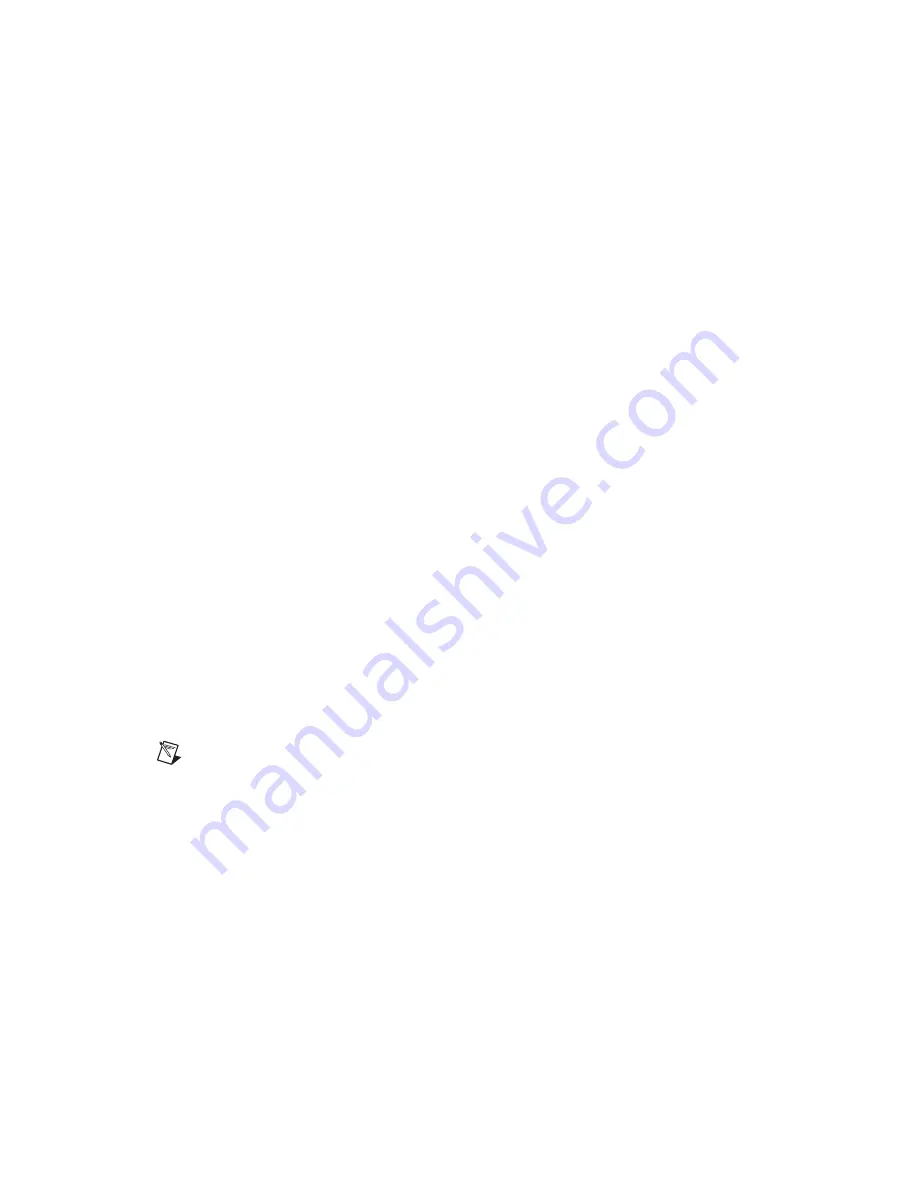
NI 6711/6713/6731/6733 Calibration Procedure
4
ni.com
NI-DAQ supports a number of programming languages, including
LabVIEW, LabWindows/CVI, Microsoft Visual C++, Microsoft Visual
Basic and Borland C++. When you install the driver, you only need to
install support for the programming language that you intend to use.
You also need copies of the
ni671xCal.dll
,
ni671xCal.lib
, and
ni671xCal.h
files.
The DLL provides calibration functionality that does not reside in
NI-DAQ, including the ability to protect the calibration constants, update
the calibration date, and write to the factory calibration area. You can
access the functions in this DLL through any 32-bit compiler. The factory
calibration area and the calibration date should only be modified by a
metrology laboratory or another facility that maintains traceable standards.
Configuring the NI 6711/6713/6731/6733
The NI 6711/6713/6731/6733 must be configured in NI-DAQ, which
automatically detects the device. The following steps briefly explain how
to configure the device in NI-DAQ. Refer to the
NI 671X/673X User
Manual
for detailed installation instructions. You can install this manual
when you install NI-DAQ.
1.
Power down the computer.
2.
Install the NI 6711/6713/6731/6733 in an available slot.
3.
Power on the computer.
4.
Launch Measurement & Automation Explorer (MAX).
5.
Configure the NI 6711/6713/6731/6733 device number.
6.
Click
Test Resources
to ensure that the NI 6711/6713/6731/6733 is
properly working.
The NI 6711/6713/6731/6733 is now configured.
Note
After a device is configured in MAX, the device is assigned a device number, which
is used in each of the function calls to identify which DAQ device to calibrate.
Writing the Calibration Procedure
The calibration procedure in the
Calibrating the NI 6711/6713/6731/6733
section provides step-by-step instructions on calling the appropriate
calibration functions. These calibration functions are C function calls from
NI-DAQ that are also valid for Microsoft Visual Basic and Microsoft
Visual C++ programs. Although LabVIEW VIs are not discussed in this
procedure, you can program in LabVIEW using the VIs that have similar
names to the NI-DAQ function calls in this procedure. Refer to the













